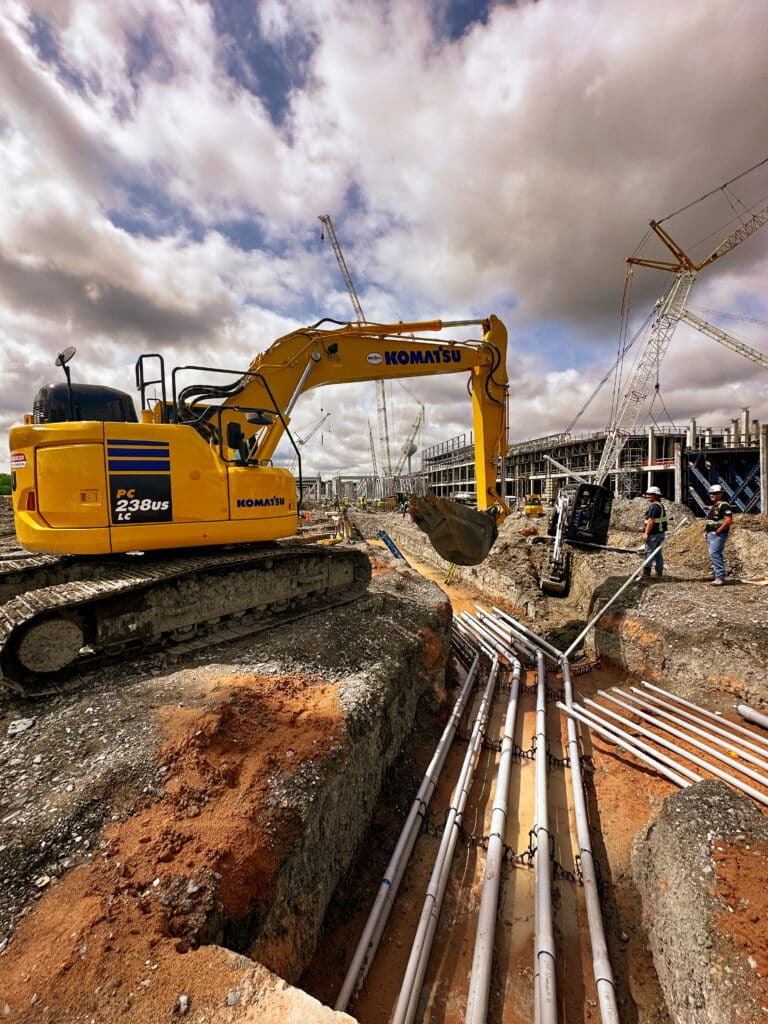Duct Bank Installation in Dallas, TX & Surrounding Areas
Utility Duct Banks

Rueben Group Underground Utility Duct Banks
When installing electrical or wiring systems on a property, you need a duct bank to protect the cables from the elements.
Rueben Group offers concrete duct bank installation throughout the Dallas-Forth Worth area. Our expert contractors lay reinforced concrete around PVC pipes or conduits to ensure a safe, secure pathway for your electrical cables.
If you are looking for duct bank installation near Dallas or Fort Worth, TX, we’re here to help.
What Is a Duct Bank?
A duct bank is a concrete pathway that allows a large quantity of data and electrical cables to securely run without being damaged or tampered with. Some duct banks are installed above ground, but the majority are designed to run underground.
Duct banks are common on construction sites to protect electrical cables from equipment, as well as on campuses, hospitals, industrial facilities, and data centers that have large quantities of cables that run underground or need to be routed to a central location.
Our contractors scout your site and identify the best place to install your duct bank, then we mark appropriate dig sites and create trenches that we will use to lay the concrete.
A duct bank is important because it ensures proper spacing of cables, which can help avoid issues such as overheating, cable congestion, and damage from external elements.
First-Class Duct Bank Installation Services by Rueben Group
At Rueben Group, we pride ourselves on delivering premier duct bank installation in Dallas, TX. Our team of seasoned duct bank professionals leverages cutting-edge technology and industry-leading practices to ensure your project’s success. With a focus on reliability and efficiency, our duct bank solutions are designed to protect and manage your electrical and communication cable networks, providing a robust infrastructure that stands the test of time.
Furthermore, choosing Rueben Group for your duct bank installation means opting for unparalleled expertise and dedication. We understand the unique challenges presented by the greater Dallas-Fort Worth environment and tailor our approach to meet and exceed your expectations. Our commitment to unbeatable quality and customer satisfaction is evident in every duct bank project we undertake, making us the go-to choice for those seeking premier duct bank installation services in the region.
The Duct Bank Installation Process
Learn how the duct bank installation procedure works from start to finish with Rueben Excavation.
Our process for duct bank installation in Dallas, TX, is carefully tailored to ensure maximum efficiency and reliability for your infrastructure projects. Understanding what goes into this process can help you better prepare yourself for the scope and scale of your upcoming project.
1. Site Inspection
We scout your site and thoroughly inspect it to determine where the best location for your duct bank could be. We’ll then mark the installation site to specify where conduits will be placed and where our contractors will dig the trenches.
If you have an above-ground conduit, then we’ll mark the installation location before moving on to the next phase of installation.
2. Duct Bank Design
We develop a customized duct bank installation plan based on factors like cable length and width, depth requirements, and the layout of your property. Our goal is to ensure enduring, reliable communication with your property while also ensuring there is adequate opportunity to scale as needed.
Concrete and PVC are the most common materials used in duct bank construction, but some tubes are also made of high-density polyethylene (HDPE). Cable frames, racks, and support brackets are also chosen to ensure that the cables remain stable and properly spaced at all times.
3. Duct Bank Trenching
With the help of a backhoe, we dig trenches at the appropriate depth to ensure your duct bank is the right size for your banks. The total length and width of the trench will depend on the number of ducts you need.
Ducts are usually laid beside one another, but they may be laid vertically in some cases, such as in areas with limited space or when we need to separate certain types of cables from one another.
4. Duct Installation and Cable Pulling
Ducts are laid according to the client-approved design and set up with the appropriate support structures for the cables.
Next, we run the cables through the ducts and mount them on their respective support structures. The next step is terminating cables at their endpoint, which involves connecting them to their targeted distribution point.
5. Backfilling
During the final stage of installation, we refill the trenches with reinforced concrete. We surround the ducts with concrete to provide maximum protection against the elements. This creates a shell around the pipes. Then, we’ll cover the concrete with a backfill material suitable for your property. This could be gravel, soil, or something else.
In some cases, we may use concrete as the backfilling material. This provides the highest level of protection and is ideal for sites that need maximum load capacity over their cables.
Other Services
Emergency Utility Repair
Sewer and Water Line Installation
Storm System
Septic System
Catch Basin
Grade Ring Adjustments
Leave Your Duct Bank Utility Work To Us!
From septic systems to duct bank installation and beyond, the team behind Rueben Group are construction experts. We offer free consultations to every prospective client to ensure they get the best information and transparent rates. No matter what you’re building or need help with, our team is here to answer any and all questions.
You can reach out to our team by phone at 945-227-1077 or by requesting a quote online now.

